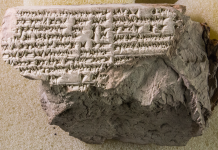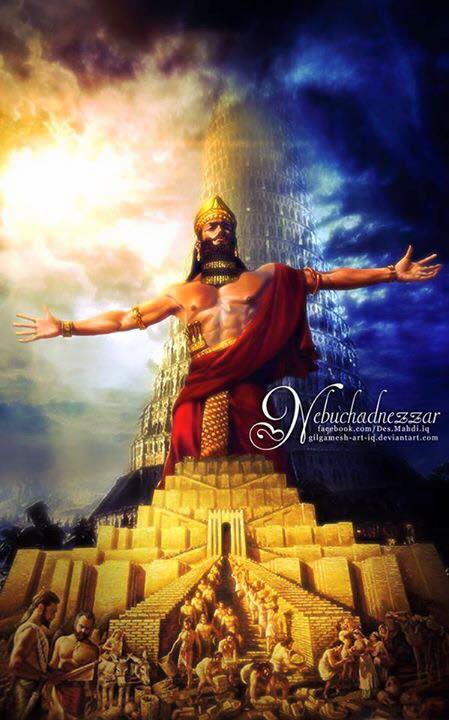| Dr . Gorgis Mardo This article of mine is a response to what the Assyrian preacher Ashur Georgis wrote on the Katitabat website on 6/19/2009 under the title “Assyrian phobia” 1 – Extinction of the ancient Assyrians In contrast to the abundance of information about the period of the empire, the information about Assyria itself seems to support the idea of genocide, which also seems to be reinforced by the testimonies of ancient eyewitnesses. The historian, Father Albert Abuna, in his article published on the Ankawa.com website, challenged all the conservative contemporary Assyrian claimants and some of the deluded Chaldeans who are drifting behind them if they could prove the final non-extinction of the Assyrians with scientific and historical evidence away from the political quackery based on Forgery, distortion and illusions. The righteous Chaldean son, Nabupolassar, is the son of the king (Bel my son), who assumed the throne of Babylon in the year 702-700 BC. AD during the reign of the Assyrian king Sennacherib, then he is one of the descendants of the rebellious Chaldean king (Marduk Baladan) who was ruler of the sea country during the reign of Sennacherib’s grandson (King Ashurbanipal), and he was waiting for the right time to regain the throne of Babylon from his cruel Assyrian usurpers, after the death of Ashurbanipal in 627 s. The deterioration of the situation in the Assyrian state worsened from what it had reached at the end of his reign, so NabuPolassar seized the opportunity and declared independence from the Assyrian state and ascended the Babylonian throne in 626 BC. AD, founding the eleventh dynasty of Babylon, the Chaldean or New Babylonian state, then the Chaldean Empire. He liquidated the occupying Assyrian military presence from the Babylonian regions, and imposed his rule on the entire south by uniting the Chaldean tribes under one Chaldean identity, thus abolishing the system of multiple tribes and houses. A loss to the Assyrian state between the years 612-609 BC. M. the region of Assyria and all its affiliated regions up to the borders of Asia Minor today, including Assyria, Nineveh and Erbil (Hydiab), as reported by historical sources (Introduction to the History of Ancient Civilizations / Taha Baqir, pg. 548 – The Greatness of Babylon / Harry Sachs, pg. 170-171 – History of Syria, Lebanon and Palestine / Part One / Philip Hitti, pp. 155-156 – The Triumph of Civilization / James Henry, translated by Ahmed Fakhry, p.And that the Chaldean presence existed in the Assyrian countries before the demise of the Assyrian entity, and its density increased exponentially after its demise due to the rule of the Chaldeans taking control of the Assyrian country and its transformation into a part of the Chaldean country, where Professor Habib Hanuna says (the Chaldeans and the national designation) that the Assyrian kings were in the midst of their continuous military campaigns against The Chaldean kingdoms, during the period between the eleventh century and the seventh century BC, had captured more than half a million Chaldeans, and deported them to the north, northwest, and northeastern regions of Assyria, and the sources indicate that camps had been established for the Chaldean prisoners, called Beth a young man >It means the house of captives in the village of Karmlis and the village of Pablo near Dohuk, and camps had been established in the Amadiya region north of Dohuk between Pablo and Araden and Enishki. Residential complexes and units, and the presence of the Chaldeans in northern Mesopotamia is confirmed by the Greek historian (Xenophon), who accompanied the Greek military campaign known as (Brigade of Ten Thousand) in 410 B.C. in his book (The Campaign of Ten Thousand / Translated by Ya`qub Mansur p. 182) and when it retreated in front of The Persians, in a battle near Babylon, turned back, heading to their country, and on the way back, Xenophon says:Before we crossed the borders of Armenia (Asia Minor or present-day Turkey) and on the other bank of the Tigris River, we were confronted by many forces consisting of different types that tried to prevent us from crossing the river. When we inquired about the identity of those forces, we learned that they were Armenian, Chaldean, and Mardinian forces, and they were affiliated with Orentaeus and Autokhas. And he adds, saying: We have been told that the Chaldeans are a free people that cannot be matched by any other people in the region in terms of their skill in fighting! They are truly irrefutable historical facts that expose the falsity of the inaccuracies and lies promoted by the fake Assyrian pretenders and their hired agents who are terrified by the name of the Chaldeans, to the extent that they, due to their intense hatred of the Chaldeans, deny them the process of eliminating the Assyrian state and attribute that to the Medes! This in itself is considered noble in the characteristics of the Chaldeans, even if they repeat it contrary to everything confirmed by historians, including but not limited to the famous historian (George Rowe), who confirms the control of the Chaldeans over the entire Assyrian region in a tight manner, so that no rebellion or any move against the Chaldean Empire occurred until Its fall at the hands of the Achaemenid king Cyrus in 539 BC. M because of the internal betrayal of a military commander in the Chaldean army and a Jewish conspiracy inside the court. If the Medes destroyed the Assyrian state, as the contemporary advocates of Assyria like to say, then how foolish he was to say, why did they abandon the rule of Assyria! ! Doesn’t this mean that their role was a secondary auxiliary role for the Chaldeans, not like the main Chaldean role! ! Therefore, the Chaldeans imposed their full control over the Assyrian country. |



















